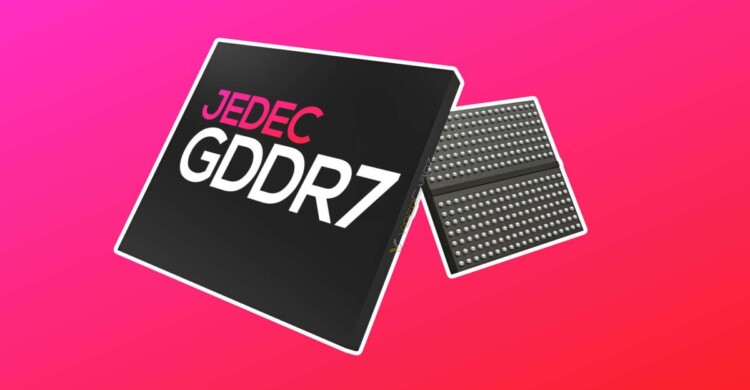JEDEC Solid State Technology Association, the engineering organisation and standardisation body, recently published the new standard for the JESD239 GDDR7 graphics memory. Now available for download via the body’s official site, the new memory standard will soon replace the current GDDR6 lineup.
Specs-wise, JESD239 GDDR7 offers double the bandwidth over GDDR6, reaching up to 192 GB/s per device, and is poised to meet the escalating demand for more memory bandwidth in graphics, gaming, compute, networking and AI applications. “JESD239 GDDR7 is the first JEDEC standard DRAM to use the Pulse Amplitude Modulation (PAM) interface for high frequency operations. Its PAM3 interface improves the signal to noise ratio (SNR) for high frequency operation while enhancing energy efficiency. By using 3 levels (+1, 0, -1) to transmit 3 bits over 2-cycles versus the traditional NRZ (non-return-to-zero) interface transmitting 2 bits over 2-cycles, PAM3 offers higher data transmission rate per cycle resulting in improved performance.”
Other additional features of GDDR7 include the following:
- Core independent LFSR (linear-feedback shift register) training patterns with eye masking and error counters to improve training accuracy while reduce training time.
- Doubles the number of independent channels doubles from 2 in GDDR6 to 4 in GDDR7.
- Support for 16 Gbit to 32 Gbit densities including support for 2-Channel mode to double system capacity.
- Address the market need for RAS (Reliability, Availability, Serviceability) by incorporating the latest data integrity features including on die ECC (ODECC) with real time reporting, data poison, Error check and Scrub, and command address parity with command blocking (CAPARBLK).

“GDDR7 is the first GDDR that not only focuses on bandwidth but addresses the market needs for RAS by incorporating the latest data integrity features that allow GDDR devices to better service existing markets such as Cloud gaming and compute and extend into new applications such as AI,” Michael Litt, Chair of the JEDEC GDDR Subcommittee, said.
As for when we can expect GDDR7, that’s highly dependent on its adoption by JEDEC’s customers, which includes the likes of NVIDIA, AMD, Samsung, and SK Hynix, to name a few.
(Source: JEDEC)
Follow us on Instagram, Facebook, Twitter or Telegram for more updates and breaking news.



